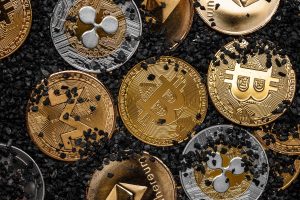Tag: Crypto & Digital Assets
Digital assets definition
Digital assets are non-physical, digital representations of value that can be stored, traded, and used in electronic transactions. Bitcoin, Ethereum, and Litecoin are all examples of digital assets.
How to get cryptocurrencies
Cryptocurrencies can be bought and sold on digital currency exchanges. Coinbase is one of the most popular exchanges and allows users to buy and sell Bitcoin, Ethereum, and Litecoin. Binance is another popular exchange that offers a wide variety of altcoins.
Tokens can also be earned through a process called mining. For committing transactions to blockchains, Bitcoin miners are rewarded with BTC while Ethereum miners receive ETH.
Investing in ICOs is another way to get involved in the cryptocurrency space. An ICO, or Initial Coin Offering, is a fundraising event where a new cryptocurrency project sells tokens to investors in exchange for Bitcoin or Ethereum.
What are the risks of investing in cryptocurrencies?
Cryptocurrencies are incredibly volatile, and investors can experience huge gains or losses in a very short period of time. The ever-changing regulatory environment is also a risk to consider, as governments around the world are still trying to figure out how to deal with this new asset class.
Cryptocurrency scams and frauds
Investors should also be aware of the potential for fraud in the ICO space. Many ICOs have turned out to be scams, and investors have lost a lot of money as a result. It’s important to do your research before investing in any ICO.
Hacking is another major risk to consider, as exchanges and wallets have been hacked in the past, leading to the loss of millions of dollars worth of cryptocurrency.
Security and safety
Cryptocurrencies are often stored in digital wallets. These wallets can be either online, offline, or hardware-based. Online and offline wallets are vulnerable to hacking, so it’s important to choose a secure wallet. Hardware wallets are the most secure option, as they store your private keys offline and are immune to hacker attacks.
When it comes to keeping your cryptocurrencies safe, the most important thing is to keep your private keys private. Private keys are used to access your cryptocurrency, and if they are stolen, your coins will be gone forever.
What are the potential benefits of investing in cryptocurrencies?
Cryptocurrencies offer investors a high degree of liquidity, as they can be bought and sold on digital currency exchanges 24/7. They also offer the potential for high returns, as investors have seen profits of over 1,000% in some cases. And because they are decentralized, they offer a degree of freedom and independence that traditional investments don’t.
What are the potential uses for cryptocurrencies?
Cryptocurrencies can be used to buy and sell goods and services. They can also be used to send and receive payments. And because they are decentralized, they have the potential to facilitate completely new types of transactions and applications that aren’t possible with traditional fiat currencies.
Altcoins
An altcoin is any cryptocurrency that is not Bitcoin. There are thousands of different cryptocurrencies, and new ones are being created all the time. Bitcoin is the most well-known cryptocurrency, but there are many others, including Ethereum, Litecoin, Monero, Dash, and Zcash. These are just a few of the most popular altcoins.
The total market capitalization of the cryptocurrency market is currently over $500 billion. This figure is expected to continue to grow in the years to come.
Stablecoins
A stable coin is a cryptocurrency that is designed to minimize price volatility. This makes them appealing to investors who want to avoid the high degree of volatility that is typically associated with cryptocurrencies. The most well-known stablecoin is Tether, which is pegged to the US dollar.
FAQs
What are digital assets?
Digital assets are digital representations of value that can be stored, sent, and received electronically. Bitcoin, Ethereum, and Litecoin are all examples of digital assets. These assets exist on a decentralized network called a blockchain.
What is a blockchain?
A blockchain is a digital ledger of all cryptocurrency transactions. It is constantly growing as “completed” blocks are added to it with a new set of recordings. Each block contains a cryptographic hash of the previous block, a timestamp, and transaction data. Bitcoin nodes use the blockchain to differentiate legitimate Bitcoin transactions from attempts to re-spend coins that have already been spent elsewhere.
What is cryptocurrency mining?
Cryptocurrency mining is the process by which new transactions are added to a blockchain. Miners are rewarded with cryptocurrency for verifying and committing transactions to the public ledger. Ethereum, Bitcoin, and Litecoin all use different proof-of-work algorithms to verify transactions.
What is a digital asset exchange?
A digital asset exchange is a platform that allows investors to buy and sell digital assets. Coinbase, Binance, and Kraken are all examples of digital asset exchanges.
What is a cryptocurrency wallet?
A cryptocurrency wallet is a software program that stores private and public keys and interacts with blockchains to enable users to send and receive digital currency and track their balance.
Weekly Market Update: Crypto Resilience Amid Market Uncertainty
Markets face a mix of optimism and caution as post-election uncertainty looms. While cryptos like Bitcoin hold strong near $90K, traditional assets show signs of consolidation. Key economic data this week will guide market sentiment.
New All Time High for Bitcoin during US Election Volatility?
Bitcoin’s price is making waves, and with the U.S. elections on the horizon, retail traders are wondering if this could be the start of a major bull run.


